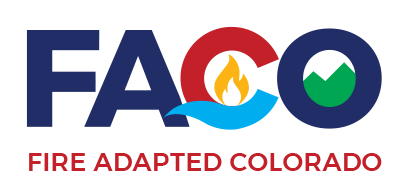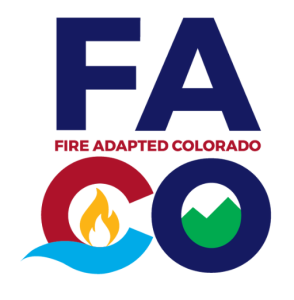The Fire That Wasn’t
by Ludie Bond and Lorena Williams Bayfield – On June 1, 2018 during yet another hot, dry and windy day, fire crews from the San Juan National Forest and local cooperators initiated response to the 416 Fire north of Durango. Over the coming days, hundreds of fire resources, including hotshot crews, engines, air tankers, and helicopters, worked to suppress the 416 Fire. The mature timber and thick understory burned readily after a winter of low snow pack and a spring of record high temperatures. By June 4th, thousands of acres were blackened and the 416 Fire was on its way to becoming the community’s most significant blaze since the 2002 Missionary Ridge Fire.
Meanwhile, also on June 4th, lightning ignited a rash of fires throughout Southwestern Colorado, including two that required multiple drops from airtankers in order to catch. But one, the 477 Fire, wouldn’t need aircraft, engines, or even firefighters. It was spotted during a reconnaissance flight and was described as a single tree smoking—a lightning start in a year-old burn scar. Crews set out to locate this new start, but after several attempts that night and the next day, they remained unable to locate it.
Considering the circumstances—the weather was hotter, drier, and windier than when the 416 Fire started—it seems perplexing that this lightning start became a “natural out,” a fire that goes out on its own. To discover why the 477 Fire extinguished itself, we need to go back to 2013 and look at a series of prescribed burns, one unplanned wildfire, and how the fuel reduction from these projects prevented a lightning strike from becoming the next big fire.
The San Juan National Forest’s land management plan includes prescribed burning with objectives to reduce hazardous fuel near homes, to protect critical infrastructure such as the transmission lines that are the sole power source for Archuleta county, and to improve habitat for wildlife, including elk, black bear, mule deer, and turkey. To meet these objectives, several prescribed burns totaling 14,000 acres were conducted from Bayfield to Fossett Gulch on the Columbine Ranger District between 2013 and 2016.
Then, in 2017, lightning sparked a wildfire on land adjacent to these prescribed burns. Incident Commander Nate Christiansen was given the directive to manage the naturally caused fire, allowing it to burn up to the border of the prescribed burn areas before stopping progress at 1,025 acres. Conditions were favorable for these actions, with fuel moistures and temperatures near normal.

Fire fighters remove fuels on a planned Rx fire
Allowing a low intensity fire to grow within pre-determined boundaries would help lower the available fuel for future wildfires that might occur in more volatile conditions.
Then in June of 2018, just one year later, the exact conditions materialized that every forest manager dreads. Extreme drought, record high temperatures, and strong winds meant that the 416 Fire, along with dozens of smaller wildfires, required aggressive suppression tactics to catch—except the 477 Fire, which had ignited in the burn scar of the previous years managed burn. Thanks to the reduction in ground fuels, the 477 Fire became the wildfire that didn’t happen. This scenario has played out innumerable times throughout our forests due to proactive management of planned and unplanned ignitions. However, because such incidents often become natural outs, they don’t appear in the local paper—instead, they become untold success stories.
The “477 Fire that wasn’t” had the potential to be as large as the 54,000-acre 416 Fire—the impacts on lives, homes, property and wildlife could have been even more devastating. Only with the support, cooperation, and patience of local communities can planned and unplanned wildland fire ignitions be successful, resulting in more incidents like the 477 Fire and fewer like the 416 Fire. The San Juan National Forest would like to thank their neighbors for continued support as they battle wildfires and conduct prescribed fires where appropriate. As we move into the upcoming prescribed burning season, please visit our website at https://www.fs.usda.gov/main/sanjuan/home and Facebook at https://www.facebook.com/SanJuanNF.
We will continue to post our plans and updates to keep you informed. For more information contact the Columbine Ranger District at 970-884-2515.

